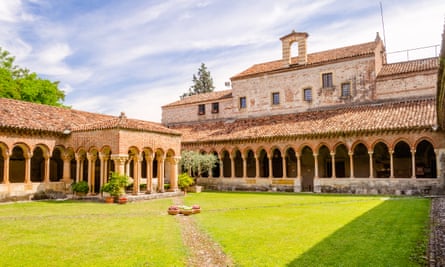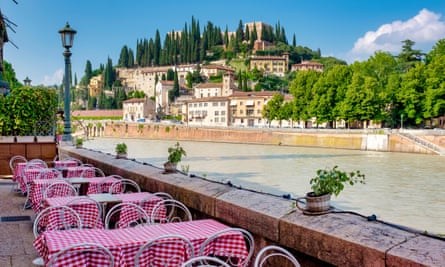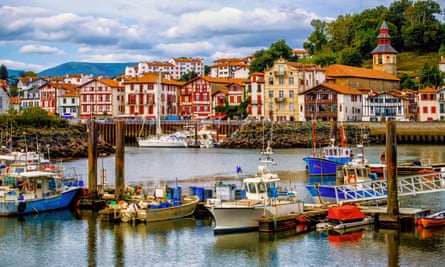Verona is an exquisite city year round for a weekend break, but with the 100th anniversary this summer of its open-air opera, held in the ancient arena, now is an especially good time to visit.
I’ve come for Rossini’s Barber of Seville, and as dusk settles over the Roman amphitheatre, the summer heat softening to a velvety blue, some 10,000 opera lovers scrabble for their seats. Swifts screech through the darkening skies and young lads skedaddle along the tiers, arms burdened with glossy brochures and cushions for hire – their sing-song cries of “programmi e cuscini” lilting loud above the swelling chatter.
A hush descends and on strolls Nicola Alaimo, a paunchy Figaro in foppish 18th-century clothes. He smiles, then breaks into his famous tongue-twisting aria – and what follows is a three-hour treat of ribald humour, extravagantly dressed dancing girls, and utterly divine, toe-tapping music.

Goodness, it’s quite the hot event. Those lucky enough to nab a ticket are treated to an arena older than Rome’s Colosseum, built in AD30 out of white and pink Valpolicella limestone. Over millennia it’s hosted gladiatorial fights and bloodsports, medieval jousts and horse races. In its heyday, it could seat 30,000, and, at its lowest ebb, was Verona’s biggest red light district.
Fast forward to the 20th century, and Maria Callas made her debut here in 1947 and, on 6 August, another operatic giant, Plácido Domingo, staged a gala performance. Mind you, it’s not just music that’s the lure: it’s also Verona.
A highly walkable city, Verona resembles a mini Venice without the tourist tat, pungent crowds or packed piazzas – a place where locals still live and work in the beating heart of its historic centre. Dawdle along those marble streets and each turn uncovers scenes straight from an operatic set: flower-filled courtyards and Renaissance balconies, facades with faded frescoes then grand piazzas studded with statuary.

I kick off at the city’s popular Casa di Giulietta, and despite its dubious links to the renowned lovers, the house offers a pleasing insight into a nobleman’s medieval home, replete with beamed ceilings, antiques and costumes from Zeffirelli’s celebrated film.
You have to book ahead, though you could just turn up and gawp at Juliet’s statue in the courtyard where graffiti-scratched love messages cover ancient walls. You can even marry in the house itself, or stage a proposal – though pity the rejected lover on receiving a “no” with such a huge gathering of witnesses queueing beneath
The heat builds, and I escape to the fast-flowing Adige river. Beneath the Roman Ponte Pietra, rapids dance over rocks where herons perch to catch the breezes, their wings opening like a string of umbrellas. Crossing this bridge brings me to vibrant Veronetta, and at Giardino Giusti I find a Renaissance walled garden where box hedges, plumbago and cypresses mix with marble nymphs and a grotto crowned with a grotesque mask.

Nearby is Verona’s impressive Roman theatre and archaeological museum – or, for a spellbinding sunset panorama, take the funicular to Castel San Pietro and soak up the views with an Aperol spritz from the adjoining café.
Ah – Verona’s food and drink scene. I barely scratch the surface of all the culinary treats on offer. Memorable, however, is a delicious cheese platter at Salumeria Gironda, taken on a romantic terrace overlooking the Adige. So too, the gelati. I recommend the unusual flavours at Gelateria Ponte Pietra.
For lunch, there’s fabulous tagliatelle bolognese at La Bottega della Gina XXL, where cooks stretch and stuff pasta while you queue – . And with Verona at the heart of one of Italy’s most celebrated wine-making regions, aperitivo hour is well spent at tiny Bottega Vini, an exquisite dark-wood wine bar in Vicolo Scudo di Francia. Established in the 16th century, it still uses its stone cellar, dating back to 3BC. If you want to sample the region’s velvety reds – those yummy amarones and valpolicella ripassos – this is the place to try them by the glass.

Simply strolling through Verona uncovers unexpected treats: there’s Piazza dei Signori, better known as Piazza Dante in honour of the poet’s lodgings with the Della Scala family and, a short hop away, a tiny square given over to the ruling family’s tombs, elaborate gothic memorials set slap in the heart of the city.
If you’ve only time for one church, make it San Zeno. This wondrous Romanesque basilica houses the remains of the eighth-century bishop of Verona who converted the city to Christianity, fabulously animated frescoes covered with ancient graffiti recounting the city’s floods of 1568, and Andrea Mantegna’s vivid altarpiece.
I swap this for the sensual delights of Verona’s celebrated perfume shops. At The Merchant of Venice in Corso S Anastasia, I’m wooed by heady fragrances and end up buying a trial kit of their best. The keynotes are playful, foppish and extravagant – a distillation in perfume of my night under the stars at Verona’s opera.
Citalia offers two-night stays at the NH Collection Palazzo Verona, from £839 per person (two sharing), including flights, transfers and breakfasts. The price is based on 21 August 2023 departure (citalia.com). Tickets for the opera, which runs until 9 September, are from arena.it
Holiday playlist: three more European classical music summer festivals

Festival Ravel, Saint-Jean-de-Luz
Mix surfing with classical music at Saint-Jean-de-Luz, birthplace of composer Maurice Ravel. The annual Ravel festival showcases not only his repertoire but also the court music of Louis XIV through to Schubert, Saint-Saëns, Debussy, Berlioz and contemporary composers.
23 August-9 September, festivalravel.fr
Gstaad Menuhin festival
Fabulous scenery and first-rate performers. The line-up includes pianists Mitsuko Uchida and Yuja Wang, alongside singers Cecilia Bartoli and Matthias Goerne. Ute Lemper pays tribute to Marlene Dietrich, and Pretty Yende headlines in a semi-staged performance of Tosca. Offsetting all this culture are walking trails above Gstaad for fresh alpine air.
Until 2 September, gstaadmenuhinfestival.ch
Salzburg festival
This year marks the 150th birthday of Max Reinhardt – the producer whose Everyman in Salzburg’s Cathedral Square kickstarted the annual event – one of the world’s most celebrated festivals of music and theatre. Expect music from the Philharmonics of Vienna and Berlin and Daniel Barenboim’s West-Eastern Divan Orchestra, and free events.
Until 30 September, salzburgerfestspiele.at

